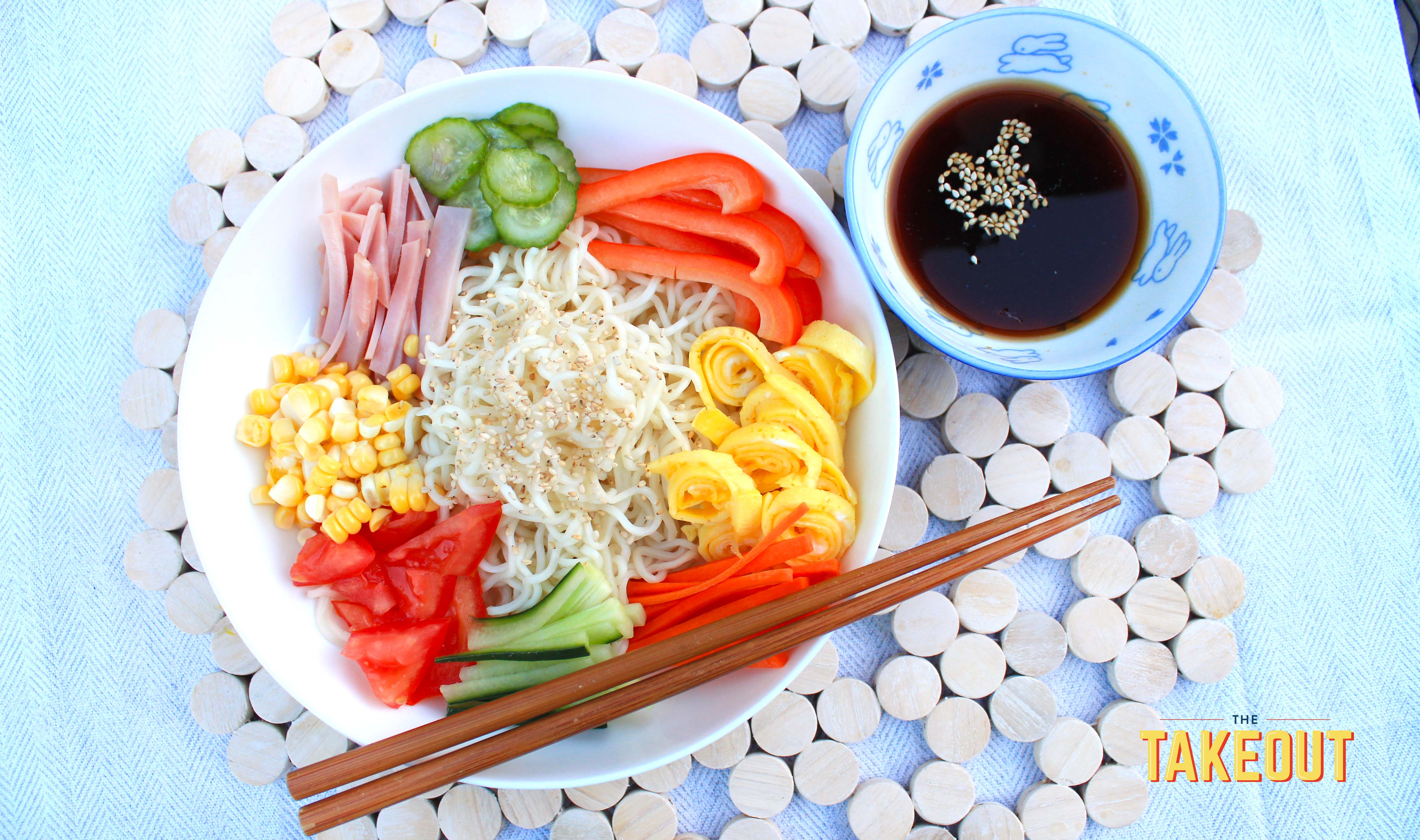Say Hiya To Hiyashi Chuka, The Japanese Cold Noodles Made For Summer
Let us declare hiyashi chuka the summer dish of 2019. Think of it as a deconstructed bowl of ramen, minus the hot broth, with an assortment of proteins and thinly sliced vegetables. A small dish of bright and savory sauce is served on the side for pouring over or dipping.
The true Japanese version of hiyashi chuka is a cool, symphonic dish made for warm weather. The ingredients are considered and deliberate, rather than a fridge raid hodgepodge. But sometimes I like making beauty out of trash, by which I mean leftovers, and hiyashi chuka is happy to oblige.
For protein, leftover poached chicken, cooked shrimp, or surimi (imitation crab) are welcome, but I delight in the presence of ham strips in my noodles. It feels slightly perverse—silky noodles, light-as-air egg crepe strands, shapely vegetables, and then ham strips. Like a coarse cousin crashing an afternoon tea, or Rodney Dangerfield at a country club. Surprising but entertaining.
For the vegetables, the world of your crisper drawer lies before you: Use sliced pea pods, cold steamed broccoli, scallions, thinly sliced carrots, corn kernels, whatever tastes good raw. Nothing too fibrous, like cabbage or raw cauliflower. Use common sense. I prefer long, thin cut vegetables that get readily caught in a tangle of ramen noodles.
The sauce is simple: Equal parts soy sauce and rice vinegar, with sugar, ginger and lemon juice. You could certainly add a splash of mirin to the sauce, or a touch of sesame oil or chile oil. I like the citrusy lift of adding lemon, lending the dressing a more ponzu slant.
Thus freed from the rules you can now enjoy the artfulness of arranging your toppings around the bowl. Gaze at it for a moment, then splash on the sauce, mix, and enjoy.

Hiyashi Chuka
Serves 2
- Noodles of your choice (such as two small instant ramen packets, seasoning pouches set aside for another use—like chip dip)
- 2 eggs, beaten
- 1 tsp. vegetable oil
- 2 Tbsp. julienned cucumber
- 2 Tbsp. julienned carrot
- 2 Tbsp. julienned red pepper
- A small fistful of ham, rind removed, thinly sliced
- 2 Tbsp. soy sauce
- 2 Tbsp. rice vinegar
- 1 Tbsp. sugar
- 1 tsp. grated fresh ginger
- Juice of half a lemon
- Sesame seeds for garnish
- Optional: spicy mustard or pickled ginger
Egg crepe:
Toppings:
(Other ideas, sweet corn kernels, diced tomato, sautéed shiitake mushrooms, pickled cucumbers, cubed tofu)
For the sauce:
Begin with preparing the noodles according to package instructions. Rinse and drain thoroughly, place in fridge to chill.
Mix the sauce ingredients together and set aside.
Make the egg crepe: Heat a 10-inch nonstick skillet over medium-high heat. Add one teaspoon of oil and wipe out any excess so just a sheen remains on the pan. Add eggs, swirling to coat the bottom. Let cook two minutes, tilting to allow uncooked egg to run to the edge of the pan. When the edges of the eggs can be lifted, lower the heat and cover the pan. Continue gently cooking the egg crepe until it's solid and pale yellow, about 1-2 minutes more. If the egg crepe seems damp on the surface, you can flip it over using your fingers, gingerly, so it doesn't rumple. (A spatula may tear it, so use your fingertips. Don't touch the pan surface, obviously.) If you try to roll a damp egg crepe the layers will merge and you wont get clean slices so it's best to make sure its fully cooked.
Once cooked, slide the egg crepe onto a cutting board to cool. Roll up like a carpet and slice thinly, gently shaking out the coils to form lovely buttercup-colored ribbons.
Divide the cooked noodles between two bowls, and artfully arrange the ham strips, egg ribbons, and julienned vegetables on top. Admire briefly.
Serve with small bowls of the sauce on the side. Pour some sauce over your bowl and mix everything to coat lightly. Go easy—you can always add more sauce later. Or dip bites of noodles and their friends into your sauce bowl directly.
